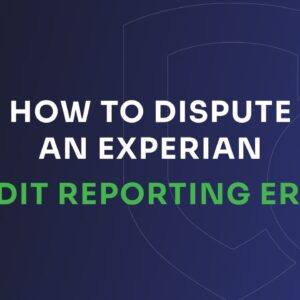
Outline:
Introduction – The Role of Collateral in Business Loans: What You Need to Know
- What Is Collateral in Business Loans?
- Why Lenders Ask for Collateral
- The Pain Point: Risk of Loan Rejection Without Collateral
2: Types of Collateral for Business Loans
- Real Estate and Property Assets
- Equipment and Machinery
- Inventory and Receivables
- Cash and Savings Accounts
- Personal Assets as Collateral
3: High-Risk vs Low-Risk Collateral
- What Makes Collateral Risky?
- Examples of Low-Risk Collateral
- Examples of High-Risk Collateral
4: How Collateral Affects Loan Approval
- Loan Amount and Interest Rate Impact
- Collateral and Credit Score Correlation
- Role in Loan Term Negotiation
5: Valuation of Collateral
- Who Appraises Your Collateral?
- How Lenders Determine Value
- Depreciation and Its Effects
6: Secured vs Unsecured Loans
- Pros and Cons of Secured Business Loans
- Pros and Cons of Unsecured Business Loans
- When to Choose One Over the Other
7: Collateral Requirements for Different Loan Types
- SBA Loans and Collateral Standards
- Traditional Bank Loans
- Online Business Loans
- Microloans and Community Development Loans
8: Legal Aspects of Using Collateral
- Understanding UCC Liens
- What Happens During Loan Default?
- Your Rights as a Borrower
9: Strategies to Strengthen Your Collateral Position
- Improving Asset Documentation
- Diversifying Your Collateral Portfolio
- Personal Guarantees – Should You Do It?
10: Alternatives When You Lack Traditional Collateral
- Use of Invoice Financing or Factoring
- Using a Co-signer or Guarantor
- Crowdfunding and Non-Collateralized Lending
11: Collateral and Digital Lending Platforms
- How Fintech Has Changed Collateral Evaluation
- Digital Assets as Emerging Collateral
- Trends in Online Lending and Collateralization
12: Pitfalls to Avoid When Offering Collateral
- Over-Pledging Assets
- Ignoring Asset Depreciation
- Signing Without Legal Review
13: Real Business Scenarios: Collateral in Action
- Case Study: Using Inventory to Secure a Loan
- Case Study: Collateral Mismanagement and Its Fallout
14: Expert Tips for Navigating Collateral-Backed Loans
- Ask Questions Before Signing
- Compare Multiple Loan Offers
- Consult Financial Advisors or Accountants
15: Final Thoughts: Making Collateral Work for You
Conclusion
FAQs
- What happens if I default on a secured loan?
- Can I change the collateral after getting a loan?
- Do all business loans require collateral?
- Is personal collateral risky?
- What are the best assets to use as collateral?
READ MORE : powerful-tips-for-repaying-your-business-loan
Collateral Secrets Uncovered: How It Can Make or Break Your Business Loan Approval

Introduction – Understanding the Importance of Collateral
The role of collateral in business loans cannot be overstated—it’s often the difference between approval and rejection. If you’re seeking business financing, understanding how collateral works can help you secure better terms, lower interest rates, and increase your borrowing power.
So, what’s the big deal with collateral?
Let’s unpack it step-by-step.
What Is Collateral in Business Loans?
Collateral refers to tangible or intangible assets that you pledge to a lender to secure a business loan. If you fail to repay the loan, the lender can legally seize the collateral to recover their losses. It’s like saying, “If I don’t pay back this loan, you can keep this car/property/equipment.”
Why Lenders Ask for Collateral
Lenders love security. They want to minimize risk, and collateral reduces the chance of financial loss. It also shows that you’re serious about repaying the loan.
The Pain Point: Risk of Loan Rejection Without Collateral
Here’s the kicker: many startups and small businesses are denied loans simply because they can’t provide sufficient collateral. That’s why understanding what qualifies and how to prepare is critical.
Types of Collateral for Business Loans
Collateral comes in many forms. Let’s break it down:
Real Estate and Property Assets
- Includes commercial buildings, land, or homes
- Highly preferred by banks due to high value and low depreciation
Equipment and Machinery
- Used especially in manufacturing, construction, and agriculture
- Can be resold or repossessed if needed
Inventory and Receivables
- Perfect for retail or wholesale businesses
- Lenders often advance 50–80% of inventory value
Cash and Savings Accounts
- Most liquid form of collateral
- Can be immediately tapped by lenders
Personal Assets as Collateral
- Homes, vehicles, or investments
- Risky but sometimes necessary for small business owners
High-Risk vs Low-Risk Collateral
Not all collateral is treated equally.
What Makes Collateral Risky?
- High depreciation rate
- Difficult to liquidate
- Unstable market value
Examples of Low-Risk Collateral
- Commercial property
- Cash savings
- Government bonds
Examples of High-Risk Collateral
- Outdated equipment
- Niche inventory
- Digital assets without clear ownership
How Collateral Affects Loan Approval
Loan Amount and Interest Rate Impact
The more valuable the collateral, the more money you can borrow—and at lower interest rates.
Collateral and Credit Score Correlation
Good collateral can sometimes balance out a lower credit score.
Role in Loan Term Negotiation
Better collateral gives you leverage to ask for longer repayment terms or reduced fees.
Valuation of Collateral
Who Appraises Your Collateral?
Usually, banks hire independent appraisers. In fintech, it can be algorithm-based valuation.
How Lenders Determine Value
They consider current market price, liquidity, and future depreciation.
Depreciation and Its Effects
A truck worth $50,000 today might be worth $30,000 in two years. Lenders factor this into how much they’ll offer.
Secured vs Unsecured Loans
Pros and Cons of Secured Business Loans
Pros:
- Lower interest rates
- Higher loan amounts
- Better terms
Cons:
- Risk of losing assets
- More paperwork
Pros and Cons of Unsecured Business Loans
Pros:
- No risk to personal/business assets
- Faster approval
Cons:
- Higher interest rates
- Smaller loan limits
When to Choose One Over the Other
If you have valuable assets and want low-interest, go secured. If you’re early-stage or asset-light, unsecured loans might be better.
Collateral Requirements for Different Loan Types
SBA Loans and Collateral Standards
The U.S. Small Business Administration (SBA) typically requires collateral for loans above $25,000. They’ll take what’s available—but won’t reject solely based on lack of it.
→ Learn more about SBA loans here:
https://www.sba.gov/funding-programs/loans
Traditional Bank Loans
Expect thorough collateral vetting. Banks prefer real estate and equipment.
Online Business Loans
Fintech lenders are more flexible. They might accept digital sales, social proof, or crypto assets.
Microloans and Community Development Loans
Often lenient with collateral due to social impact goals.
Legal Aspects of Using Collateral
Understanding UCC Liens
UCC stands for Uniform Commercial Code. It’s a legal claim lenders place on your collateral.
What Happens During Loan Default?
If you default, the lender enforces the lien and repossesses the collateral. It’s legal and binding.
Your Rights as a Borrower
Always request disclosure. You have a right to know:
- What asset is secured
- Repayment terms
- Repossession terms
Strategies to Strengthen Your Collateral Position
Improving Asset Documentation
Well-documented assets are more appealing. Keep invoices, titles, and valuations handy.
Diversifying Your Collateral Portfolio
Offer a mix—like cash + inventory—to spread risk.
Personal Guarantees – Should You Do It?
Only if you’re confident in repayment. It puts personal assets on the line.
Alternatives When You Lack Traditional Collateral
Use of Invoice Financing or Factoring
Sell unpaid invoices to lenders for upfront cash.
Using a Co-signer or Guarantor
A trusted business partner can boost your credibility.
Crowdfunding and Non-Collateralized Lending
Great for new businesses with a strong community or niche.
Collateral and Digital Lending Platforms
How Fintech Has Changed Collateral Evaluation
AI now checks cash flow, app data, and even social media to assess creditworthiness.
Digital Assets as Emerging Collateral
Crypto, NFTs, and domain names are gaining ground.
Trends in Online Lending and Collateralization
- Instant valuations
- Smart contracts for collateral management
- Increased use of AI risk scoring
Real Business Scenarios: Collateral in Action
Case Study: Using Inventory to Secure a Loan
A wholesaler used $150,000 of electronics to secure a $100,000 short-term loan. Paid off within 9 months, boosted credit score, and unlocked bigger capital.
Case Study: Collateral Mismanagement and Its Fallout
A small manufacturer lost their factory when they defaulted on a $300,000 loan backed by the property—due to poor financial forecasting.
Pitfalls to Avoid When Offering Collateral
Offering collateral in business loans can be your golden ticket to unlocking capital, but if not handled wisely, it can also lead to financial disaster. Many businesses fall into traps that could have been avoided with proper knowledge and strategy.
Below are the most common pitfalls to avoid when offering collateral, along with expert advice on how to protect your business assets and financial future.
1. Over-Collateralizing Your Loan
What it means: Offering collateral worth far more than the loan amount you’re seeking.
Why it’s risky:
- You tie up valuable business assets unnecessarily
- You increase your loss in case of default
- You weaken your future borrowing capacity
Example: Pledging $300,000 worth of equipment for a $100,000 loan. That’s excessive and reduces your ability to secure other loans.
What to do instead:
- Get an independent valuation of your collateral.
- Negotiate with lenders to match collateral value to the loan amount.
- Offer multiple lower-value assets instead of one high-value asset.
2. Pledging Essential Operational Assets
What it means: Using business-critical assets like your main delivery vehicle, core machinery, or retail premises as collateral.
Why it’s risky:
- If repossessed, your operations may come to a halt
- It puts your day-to-day survival at risk
- It weakens investor or partner confidence
Avoid this by:
- Only using non-core or backup assets as collateral
- Asking your lender if the asset can still be used during the loan term
- Having a contingency plan in case of repossession
3. Not Understanding the Collateral Agreement Terms
Many business owners skip the fine print. That’s dangerous.
Hidden clauses may include:
- Automatic liens on additional assets
- Cross-collateralization (one loan affecting multiple assets)
- Early seizure clauses without sufficient warning
Pro Tip:
Always have a lawyer or financial advisor review any agreement involving collateral, especially when it includes personal property or multiple stakeholders.
4. Offering the Same Collateral to Multiple Lenders
This is a serious legal issue known as double pledging, and it can:
- Void your loan agreement
- Lead to lawsuits or criminal fraud allegations
- Destroy your business credit
What to do:
- Maintain a collateral register showing what asset is pledged where
- Use separate assets for each loan
- Disclose existing liens upfront to avoid conflicts
5. Ignoring Depreciation of Collateral
Collateral is only as good as its market value. Equipment, vehicles, and tech assets depreciate fast.
Risks include:
- Your collateral might become under-valued mid-loan
- You may be forced to add more assets (top-up collateral)
- You lose more value than expected if the asset is seized
Smart move:
- Avoid using fast-depreciating assets for long-term loans
- Get revaluations done annually
- Consider assets with stable or appreciating value, like property or savings
6. Assuming Personal Collateral is “Safe”
Your personal home, car, or savings may feel safe—but when used as collateral, they are fair game if you default.
Real case scenario: A bakery owner used her house as collateral for a commercial loan. When COVID hit and revenue dropped, she defaulted—and lost her home.
What to do instead:
- Explore business-only collateral first
- Use personal guarantees with strict limits if necessary
- Set up a limited liability company (LLC) to protect personal assets
7. Failing to Update or Insure Collateral
Neglecting your collateral once you’ve submitted it can be costly.
For example:
- Machinery breaks down and isn’t covered by insurance
- Property decreases in value due to market crash or damage
- Vehicle used as collateral is involved in an accident
Best practices:
- Keep collateral well-maintained and insured
- Provide lenders with updated documentation
- Check if your loan requires periodic updates or reassessments
8. Not Considering the Emotional Cost of Personal Collateral
Sometimes, it’s not just about business—it’s about peace of mind.
Imagine this:
- Your family’s home is on the line
- You face sleepless nights during every cash flow hiccup
Expert insight:
Collateral should not only be valuable, but also expendable—emotionally and financially. If the loss of an asset will break you personally, don’t pledge it.
9. Using Assets Without Clear Ownership
Don’t offer assets that:
- Are still under loan or lease
- Have joint ownership (e.g., with spouse or business partner)
- Are legally disputed
This can:
- Invalidate your loan
- Lead to legal penalties
- Result in lender distrust
Secure your title documents first. Make sure you fully own what you’re pledging—and get written consent from any co-owners.
10. Relying on One Lender’s Assessment
Lenders will often undervalue your asset to reduce their risk.
Why that’s bad:
- You may be forced to offer more than needed
- You could get lower-than-deserved loan terms
Always get an independent asset valuation, especially for:
- Commercial real estate
- High-value machinery
- Artwork, collectibles, or rare inventory
Final Tip: Don’t Rush the Process
Collateral-backed loans can be long-term commitments. Don’t let urgency drive poor decisions. Take time to:
- Read the terms
- Consult advisors
- Evaluate risks
Remember: the wrong loan with the wrong collateral can cost you everything.
Expert Tips for Navigating Collateral-Backed Loans
Navigating collateral-backed loans can be a game-changer for your business—if done right. Many entrepreneurs rush into these deals without fully understanding the terms or consequences. To help you make informed decisions and avoid costly mistakes, here are expert-backed strategies to guide you through the process.
1. Evaluate Your Business Cash Flow First
Before pledging collateral, assess your cash flow. Ask yourself:
- Can I afford the monthly repayments?
- Do I have seasonal revenue fluctuations?
- What’s my backup plan in case of delayed income?
Tip: Use cash flow forecasting tools like QuickBooks or Wave to project your revenue vs expenses.
2. Never Pledge More Than Necessary
Some lenders may ask you to over-collateralize, meaning you pledge assets worth more than the loan. While this can speed up approval, it puts you at greater risk.
Pro Tip: Always negotiate the collateral terms. If you’re borrowing $100,000, you shouldn’t have to risk $300,000 worth of assets—unless the risk is justified.
3. Get a Professional Collateral Appraisal
Don’t rely solely on lender valuations. Hire an independent appraiser to determine the real market value of your asset—especially for real estate, equipment, or luxury goods.
This ensures:
- You’re not undervaluing your assets
- You have negotiation leverage
- You avoid over-pledging
READ MORE: business-loan-top-10-powerful-types-for-entrepreneur
4. Understand the Lender’s Seizure Process
Ask the lender exactly how collateral seizure works. Not all lenders follow the same timeline or process in the event of a default.
Questions to ask:
- How many missed payments trigger asset seizure?
- Will I get a warning notice?
- Is there a grace period or opportunity to renegotiate?
Knowing this can protect your business from abrupt loss.
5. Clarify the Terms of Use for the Collateral
Ensure your contract answers:
- Can you continue to use the asset (e.g., equipment, vehicle) during the loan period?
- Are there restrictions on asset resale or modification?
You don’t want to pledge a machine you’ll need for daily operations, only to realize you can’t use it anymore.
6. Consider Using Multiple Smaller Assets
Instead of risking one high-value asset, bundle several mid-value items as collateral. This reduces dependency on one major asset and spreads the risk.
Example: Rather than pledging your business property, use:
- Inventory + Accounts receivable + Vehicle
This can make lenders more comfortable while safeguarding your core operations.
7. Shop Around and Compare Offers
Don’t go with the first lender that approves your loan. Different lenders will:
- Value your collateral differently
- Offer different interest rates
- Impose varying terms
Use loan comparison platforms like:
They let you compare multiple offers with just one application.
8. Use Personal Guarantees Cautiously
A personal guarantee makes you personally liable—even if the loan is in your business name.
If you must give one:
- Understand that your personal savings, house, or car are now at risk
- Ask if a limited guarantee is possible
This limits your liability to a percentage of the total loan.
9. Check the Lender’s Reputation
Google reviews won’t cut it. Dig deeper:
- Are there complaints with the Consumer Financial Protection Bureau (CFPB)?
- What do third-party financial blogs say?
- Is the lender certified or regulated?
Use tools like:
10. Consult a Business Finance Advisor or Attorney
Before signing any agreement, get legal and financial advice. Especially if:
- You’re pledging a personal asset
- There’s fine print on UCC liens
- There are balloon payments or prepayment penalties
A financial advisor can also help you identify better funding sources or help you prepare for future borrowing without needing collateral.
Bonus Tip: Track Your Collateral’s Value Over Time
Many borrowers forget to monitor depreciation. Equipment and vehicles lose value, so be proactive:
- Schedule periodic appraisals
- Avoid long-term loans for fast-depreciating assets
- Update your asset register regularly
This helps with refinancing, future collateral swaps, or loan restructuring.
Final Word on Collateral Strategy
Taking a collateral-backed loan is not just about what you offer—it’s about how you manage the risk. The smartest business owners treat collateral as a strategic tool, not a desperate trade-off.
If you:
- Protect your assets
- Know your rights
- Choose the right lender…
You’ll turn collateral from a risk into a powerful financial advantage.
Final Thoughts: Making Collateral Work for You
Collateral is a powerful tool. When used wisely, it opens doors to more capital, better terms, and stronger business growth. Don’t fear it—learn it, use it, and benefit from it.
Conclusion
Understanding the role of collateral in business loans can turn the tides in your favor. Whether you’re running a tech startup, retail store, or farm, knowing what you can offer and how to protect your assets can make borrowing a growth opportunity instead of a liability.
FAQs
1. What happens if I default on a secured loan?
The lender can legally seize the collateral, sell it, and recover the loan balance. It also negatively affects your credit score.
2. Can I change the collateral after getting a loan?
Only with lender approval. Most contracts lock the collateral for the loan’s lifespan.
3. Do all business loans require collateral?
No. Unsecured loans, microloans, and some online lenders offer options without collateral, although terms may be less favorable.
4. Is personal collateral risky?
Yes, especially if it’s your home or life savings. Only use it when you’re certain you can repay the loan.
5. What are the best assets to use as collateral?
Cash, real estate, and business equipment are top-tier assets because they retain value and are easy to liquidate.







